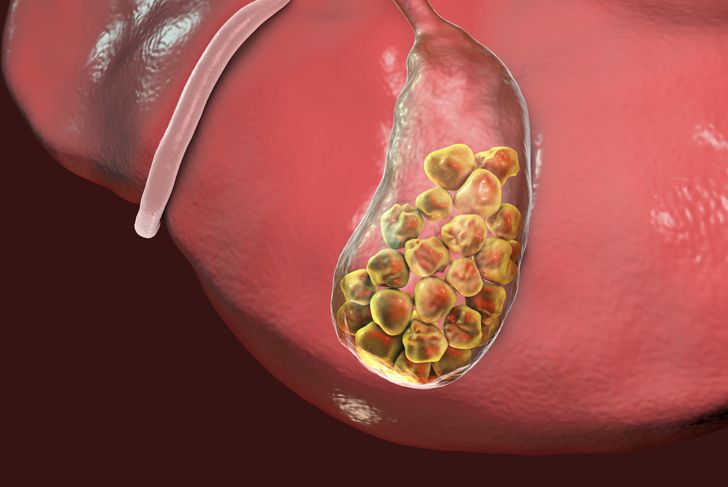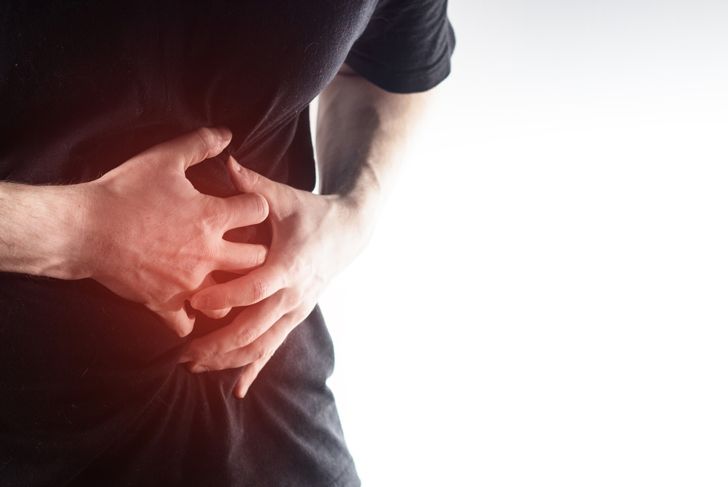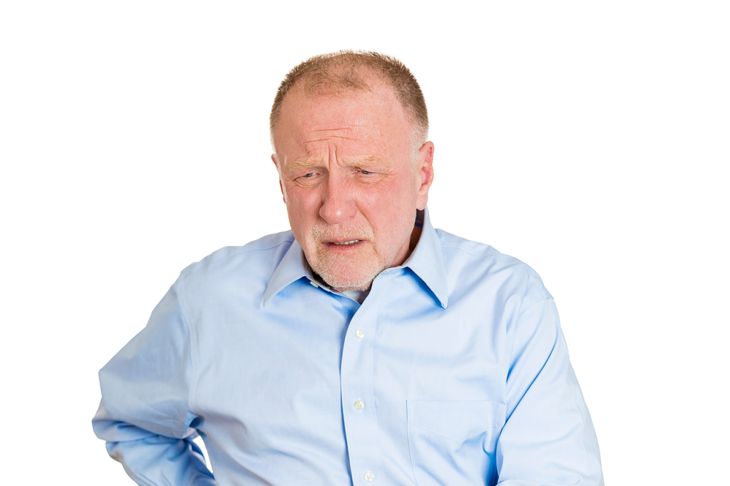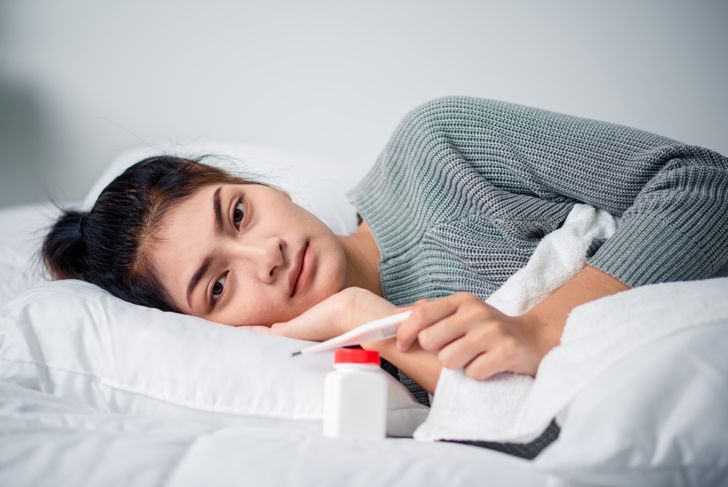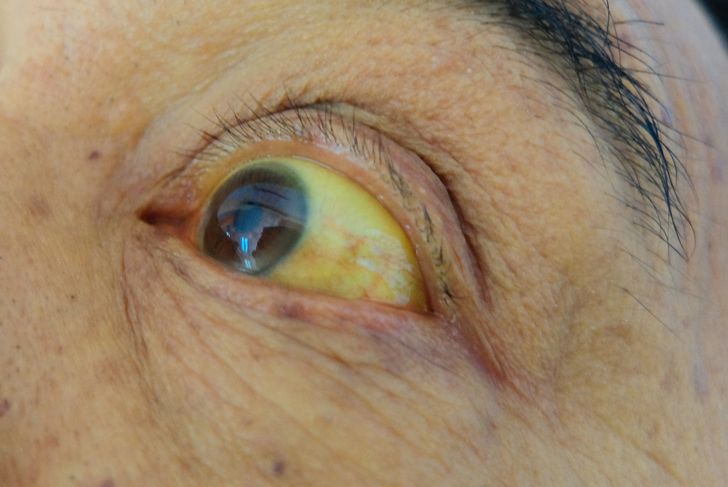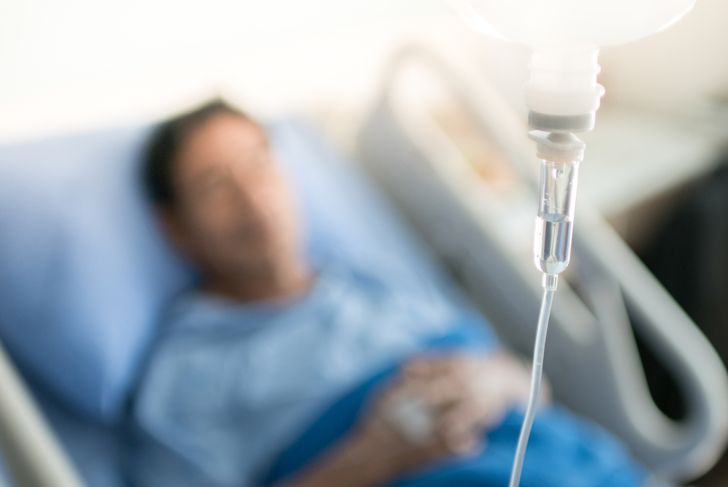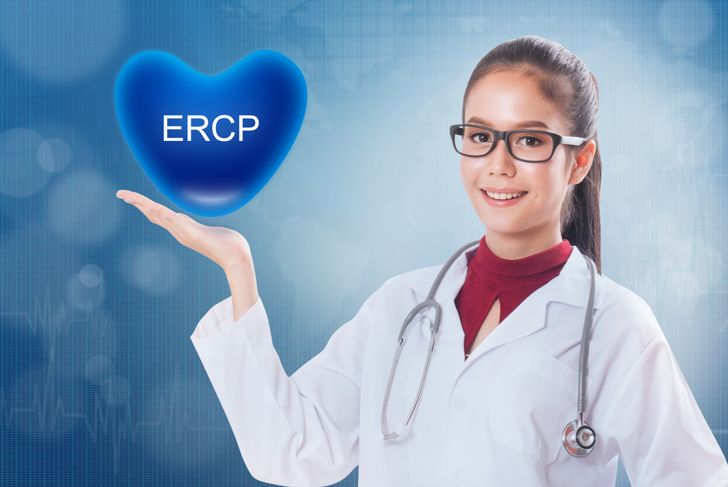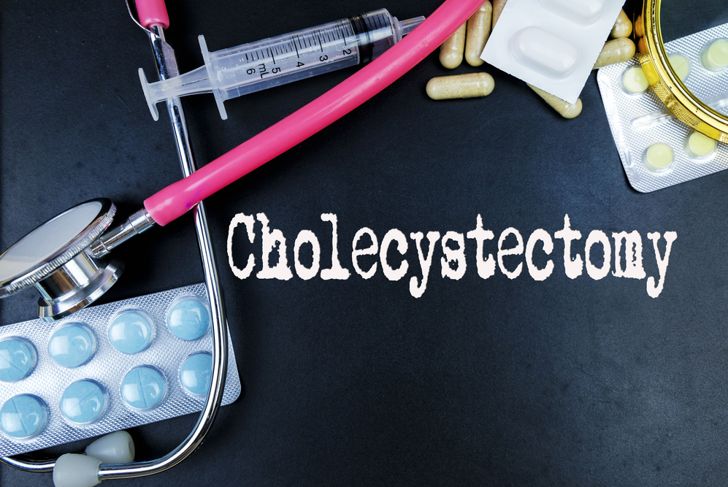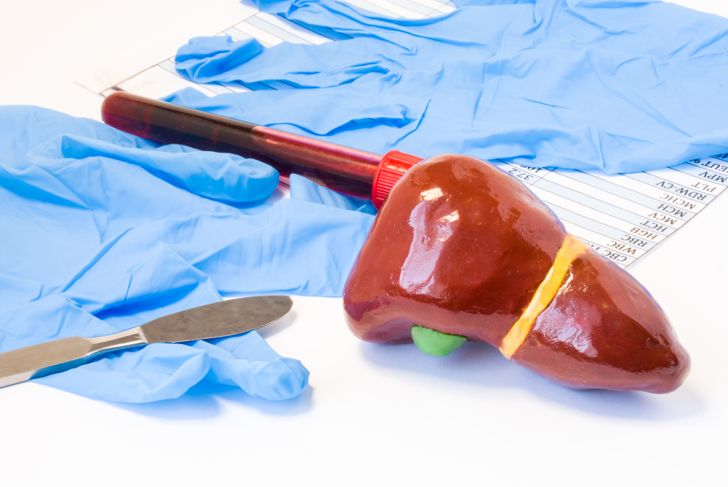The gallbladder is a small organ located in the upper right abdomen and below the liver. It attaches to the bile duct and cystic duct, which carries bile from the liver to the small intestine. Your gallbladder will store the bile temporarily. When you consume food, your gallbladder will contract and cause the bile to move through the ducts into the intestine. Cholecystitis is a condition where the gallbladder becomes inflamed because the bile cannot pass. There are two types of this condition including acute cholecystitis and chronic cholecystitis. Acute cholecystitis involves a sudden inflammation of the gallbladder. Whereas the chronic form is when the inflammation lingers.
Symptom: Gallstones
Gallstones are hard deposits of fluid that build up inside your gallbladder. If one of these stones interrupts the outflow from the gallbladder by blocking the cystic duct, then bile will become trapped in your gallbladder. In turn, the trapped bile has chemicals in it that can lead to a bacterial infection. Cholecystitis often develops in people who have gallstones, which leads to the organ becoming swollen and painful. It is important to note gallstones can still cause abdominal pain even if an infection is not present. You might be more likely to develop gallstones if you are a woman over the age of 60. Pregnant women may experience gallstones along with women who take birth control pills or estrogen replacement therapy. If you consume a high-fat diet, lost weight quickly, or are obese, you may have a greater chance of getting gallstones.
Symptom: Abdominal Pain
Besides abdominal pain associated with gallstones, cholecystitis can cause a generalized discomfort in the middle of your upper abdomen, below the breastbone. You might feel pain in the liver or gallbladder, which is in the upper, right area of your abdomen. The pain can extend to the right shoulder or back in some cases. The pain may start after eating a meal and get worse during a deep breath but can last for hours. Chronic cholecystitis can cause an intermittent pain that comes and goes irregularly. It may be mild and not be accompanied by any other symptoms. Thus, it can be difficult to diagnose chronic cholecystitis because the symptoms are not specific to any one illness. You may experience a sudden attack or episode of pain before realizing the severity.
Symptom: Tender Abdomen
Besides feeling pain, you can experience tenderness in the right abdomen when you touch it. Also, this symptom of cholecystitis seems minor, or like it can be lumped into the ‘pain’ category, it is a particular sign. In fact, in some older people who do not have pain or a fever, the only noticeable symptom is a tender abdomen.
Symptom: Flu-Like Symptoms
Cholecystitis can cause flu-like symptoms including nausea or vomiting. Fever and chills are also common. As mentioned before, gallstones can block the flow of bile, which can lead to a serious infection. When the liver cannot get rid of the bile, the ducts become infected with a condition known as cholangitis. The common signs of this particular infection include fever and pain in the upper, right abdomen. If you experience fever and chills, along with jaundice, you may have acute cholecystitis.
Symptom: Jaundice
Jaundice is a sign of cholangitis; thus, it is directly related to cholecystitis as well. Anytime a person has a problem with the liver, the yellowing of the skin or eyes, known as jaundice, can occur. Other signs of jaundice include pale, grayish bowel movements along with dark urination. If you notice these symptoms, you may have passed a gallstone from your gallbladder into a bile duct, and it is now obstructing the flow of bile from the liver.
Treatment: Hospital Care
Depending on your symptoms, you might be required to stay in the hospital. Antibiotics are often given intravenously to cure any infections as well as prevent dehydration. Medication can help with abdominal pain along with nausea and vomiting. Your meals will be limited to reduce the inflammation of the gallbladder. After you can eat and drink again, your pain lessens, and the infection clears, you can continue recovery at home. It may still take two or three days before your symptoms are completely gone. However, cholecystitis often returns, especially if you have chronic cholecystitis.
Treatment: ERCP
If you have gallstones in the common bile duct, they need to be removed. A procedure known as endoscopic retrograde cholangiopancreatography (ERCP) can remove the stones. The doctor uses a flexible telescope that goes down your mouth into the stomach to widen the area where the ducts empty into the small intestine. A small cut will widen the opening, and the gallstones can then be extracted and passed back through the flexible telescope. You may still need to have your gallbladder removed, too, since this is where the gallstones originate and can recur. In rare cases, an ERCP may not be performed, and another operation will be required.
Treatment: Laparoscopic Cholecystectomy
People with cholecystitis often need surgery to remove the gallbladder altogether. You may be eligible for laparoscopic cholecystectomy. The procedure involves a series of small slits in the abdomen. It is a minimally invasive surgery that requires just a few, tiny incision. You do not need your gallbladder to live a normal, healthy life.
Treatment: Extensive Gallbladder Removal
Extensive gallbladder removal is an open procedure that is rarely required for people with cholecystitis. You and your doctor can discuss the benefits and risks of the operation, which is usually performed with two days or while in emergency care. It depends on your overall health for surgery along with the severity of your symptoms of chronic cholecystitis. After the gallbladder is removed through an incision in the abdomen, the bile will flow from your liver into the small intestine.

 Home
Home Health
Health Diet & Nutrition
Diet & Nutrition Living Well
Living Well More
More